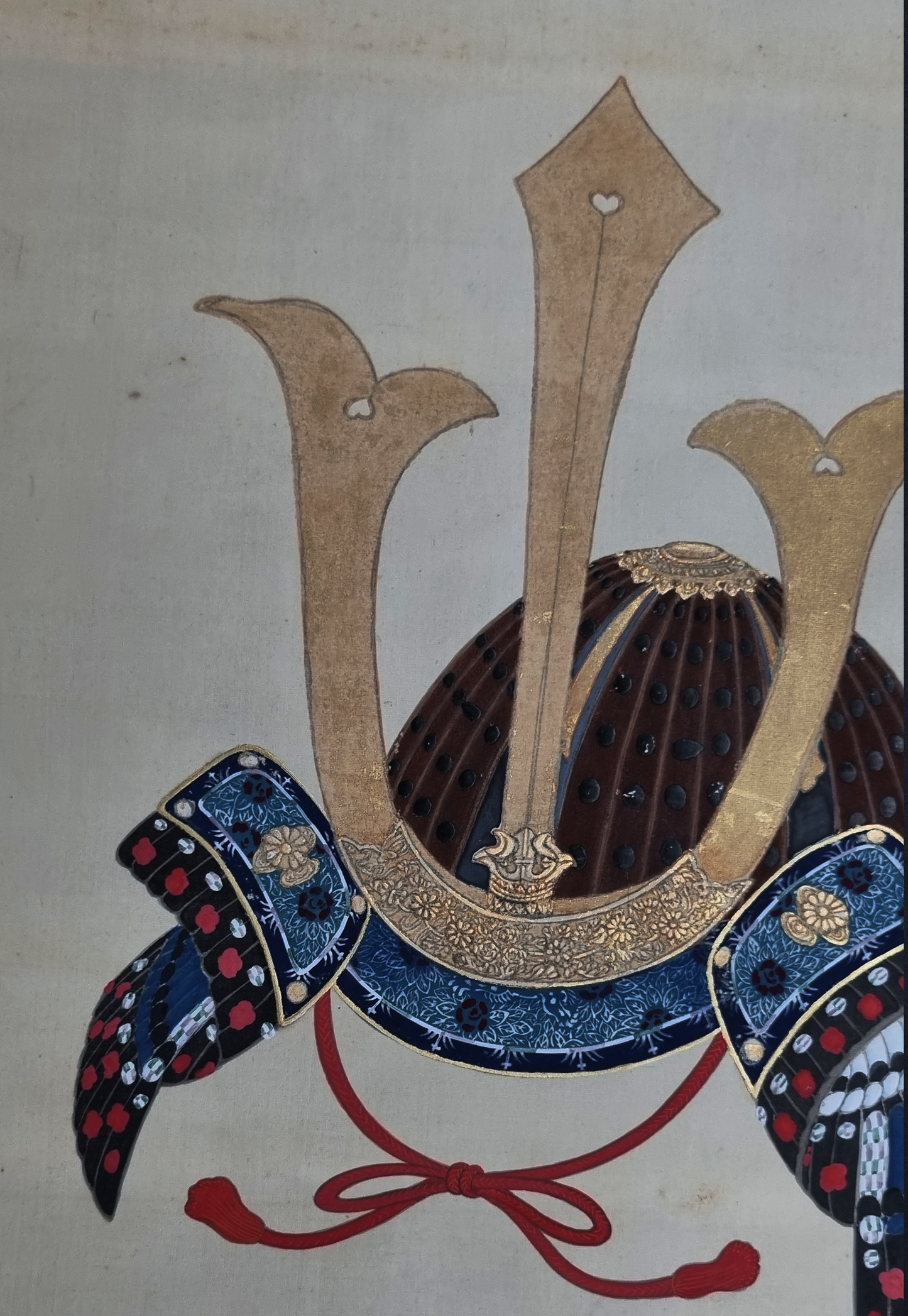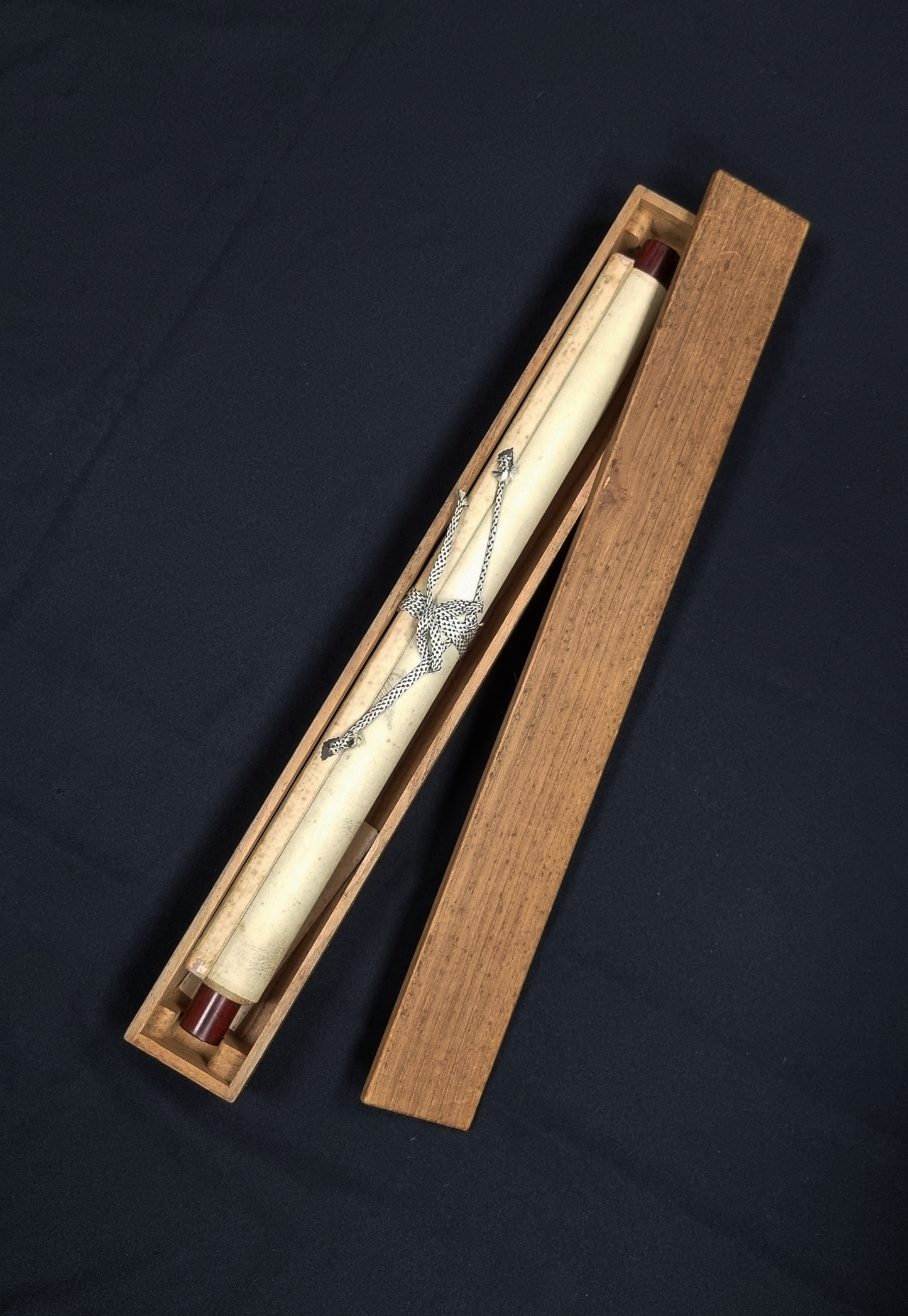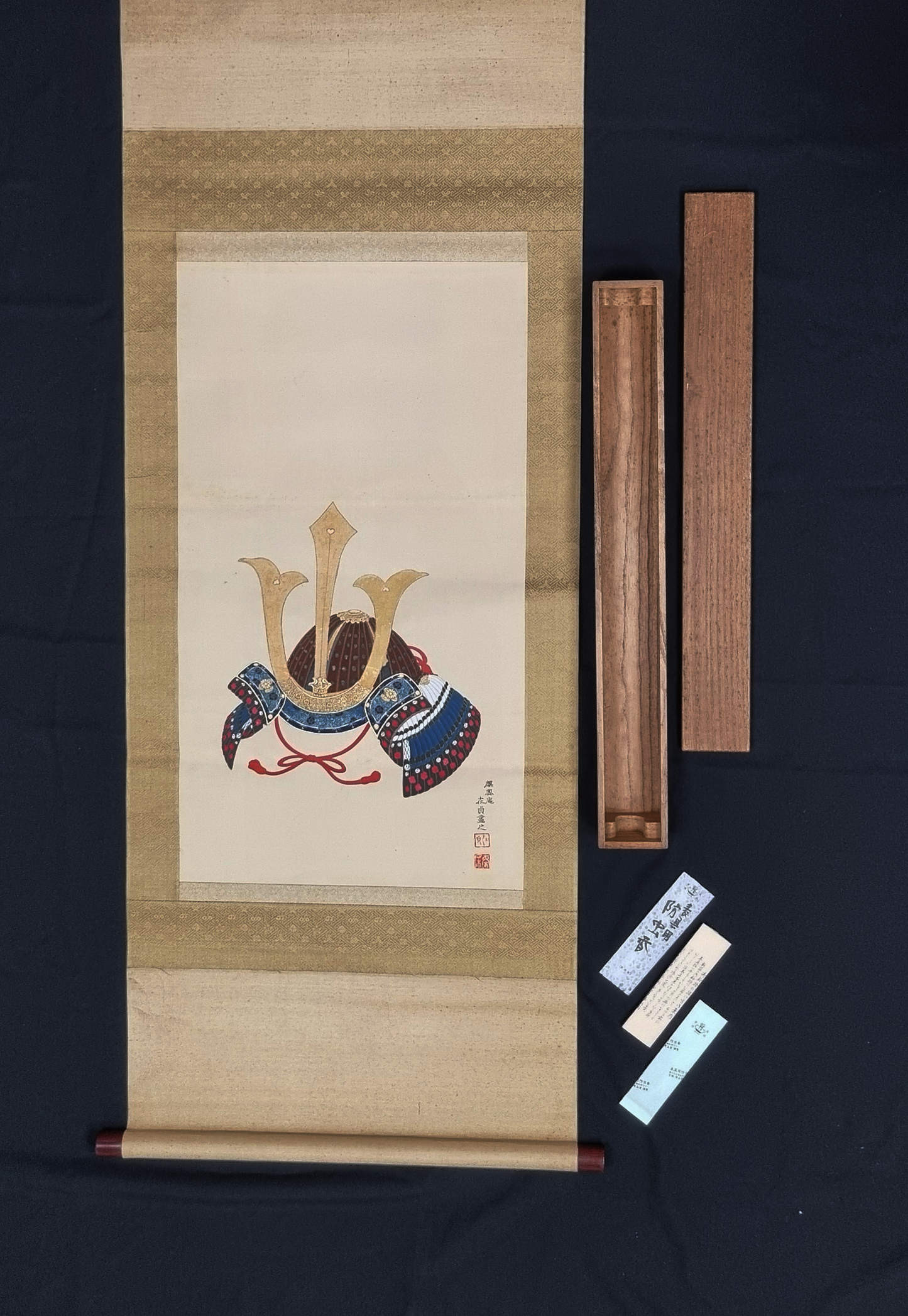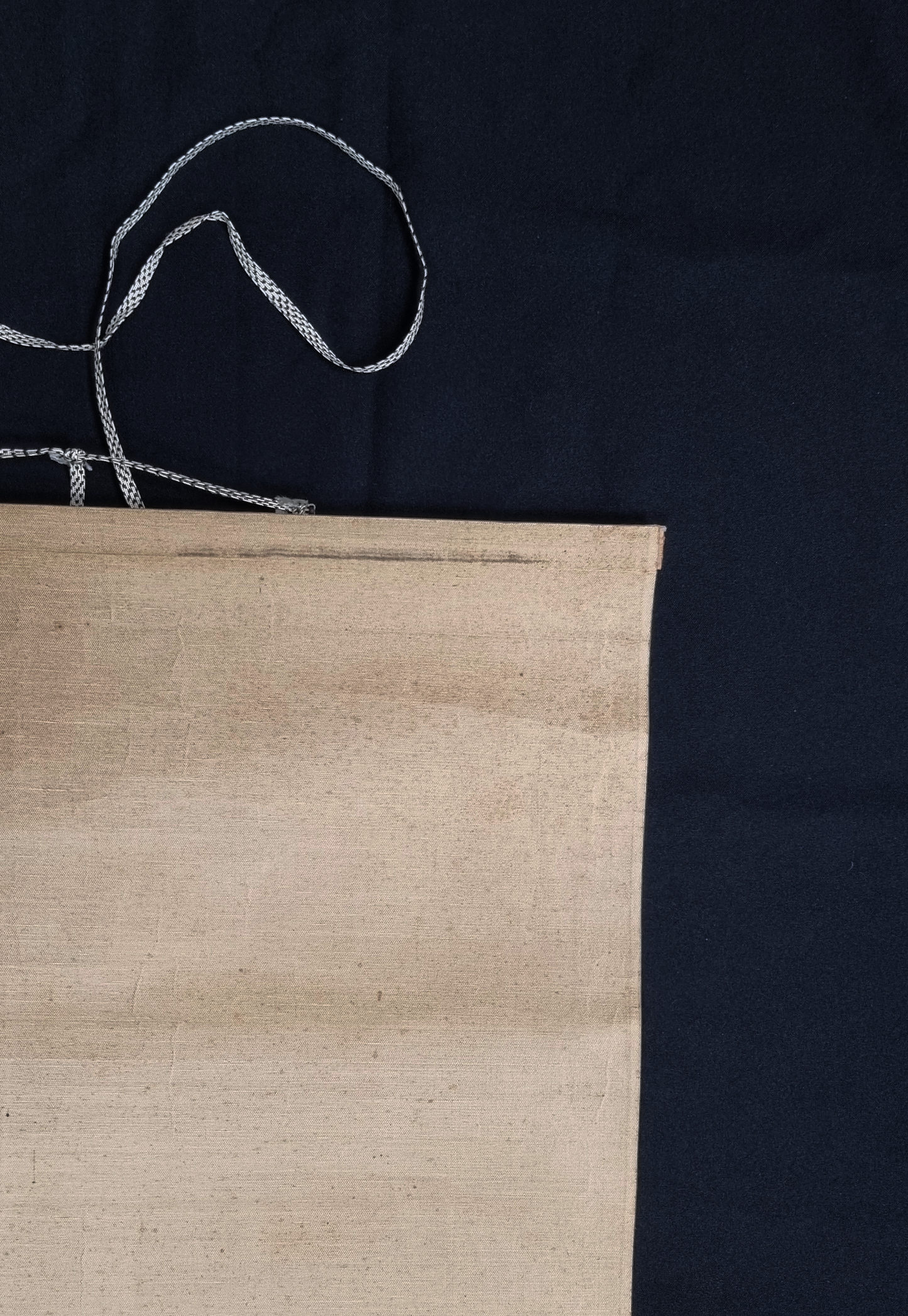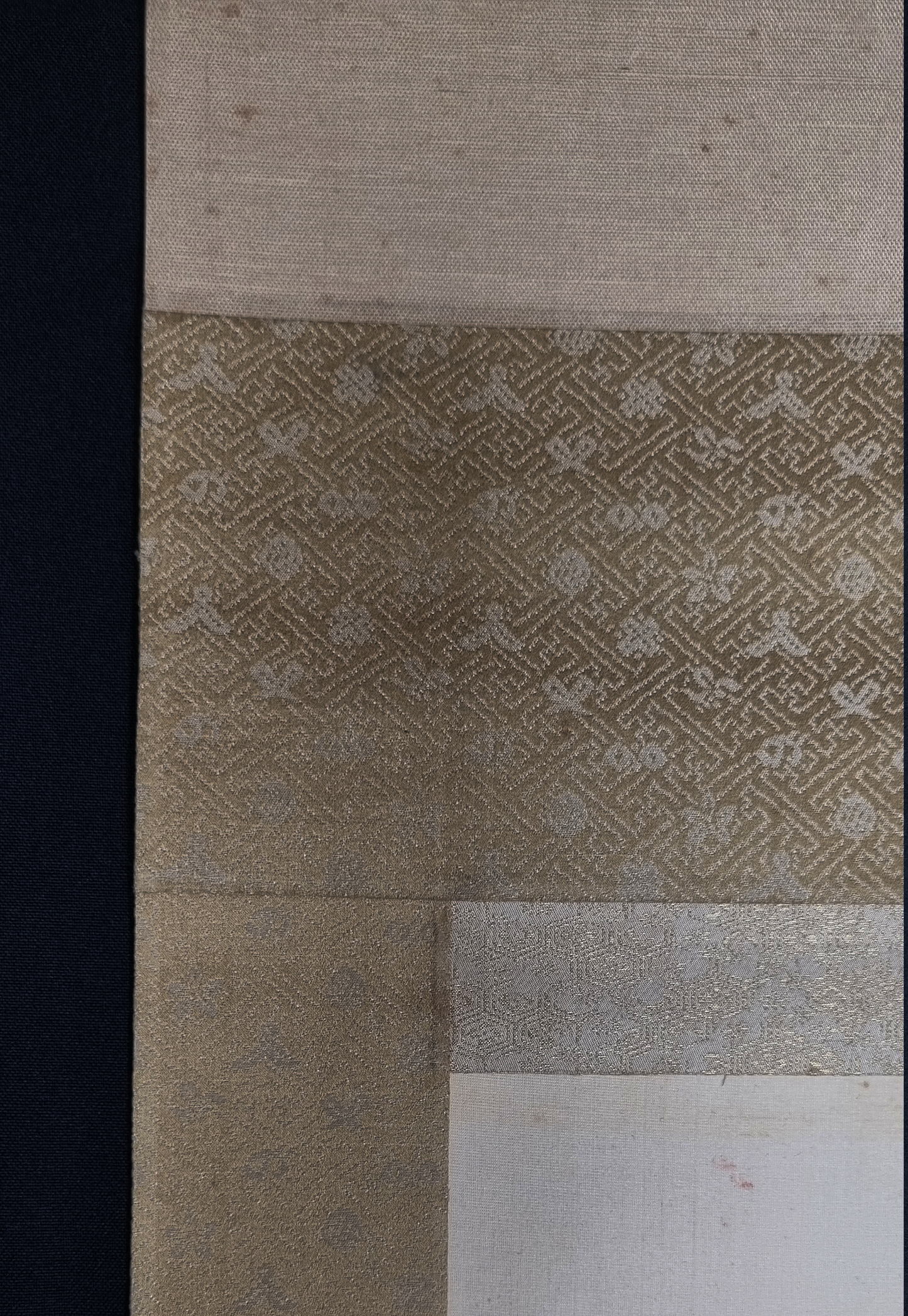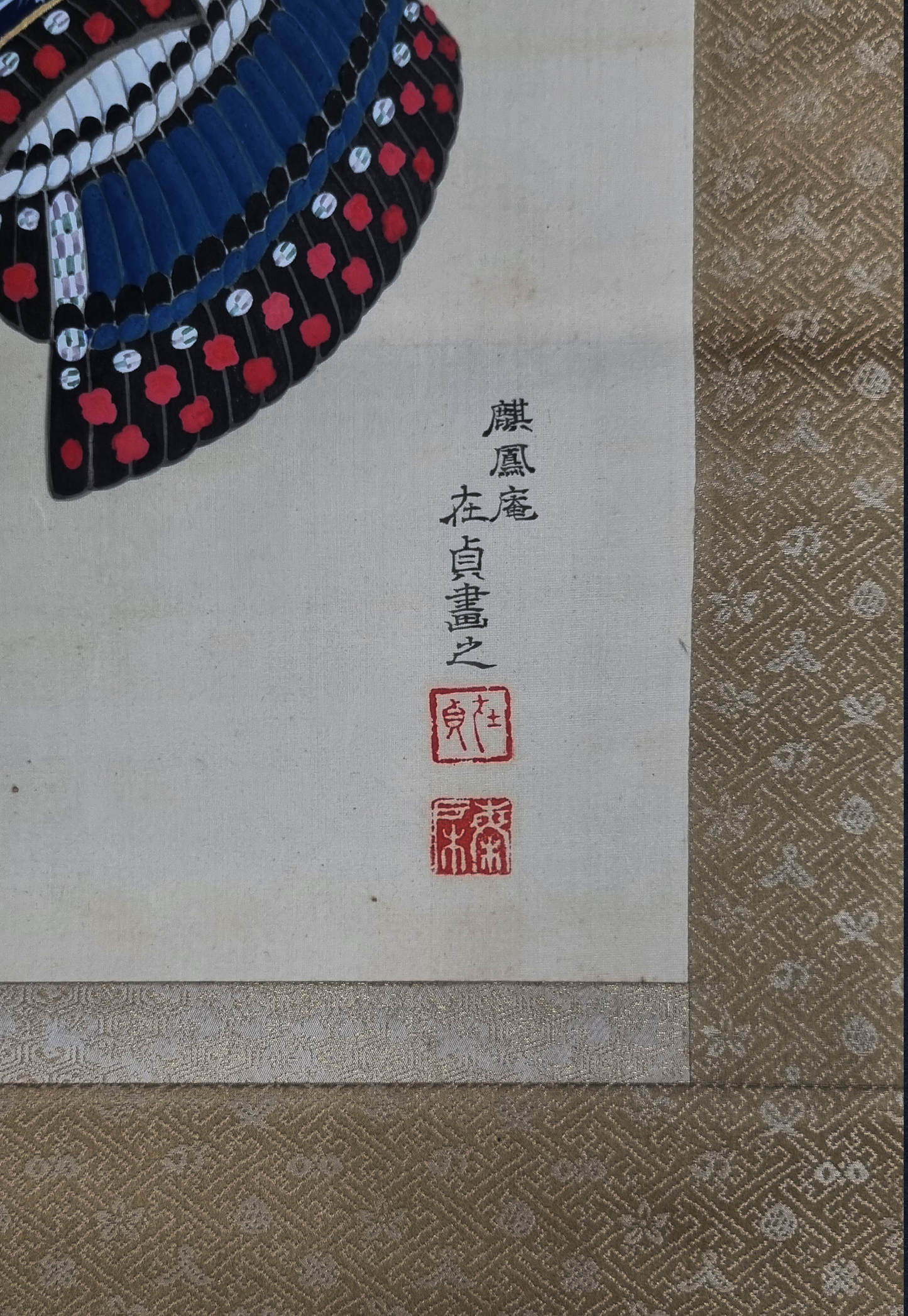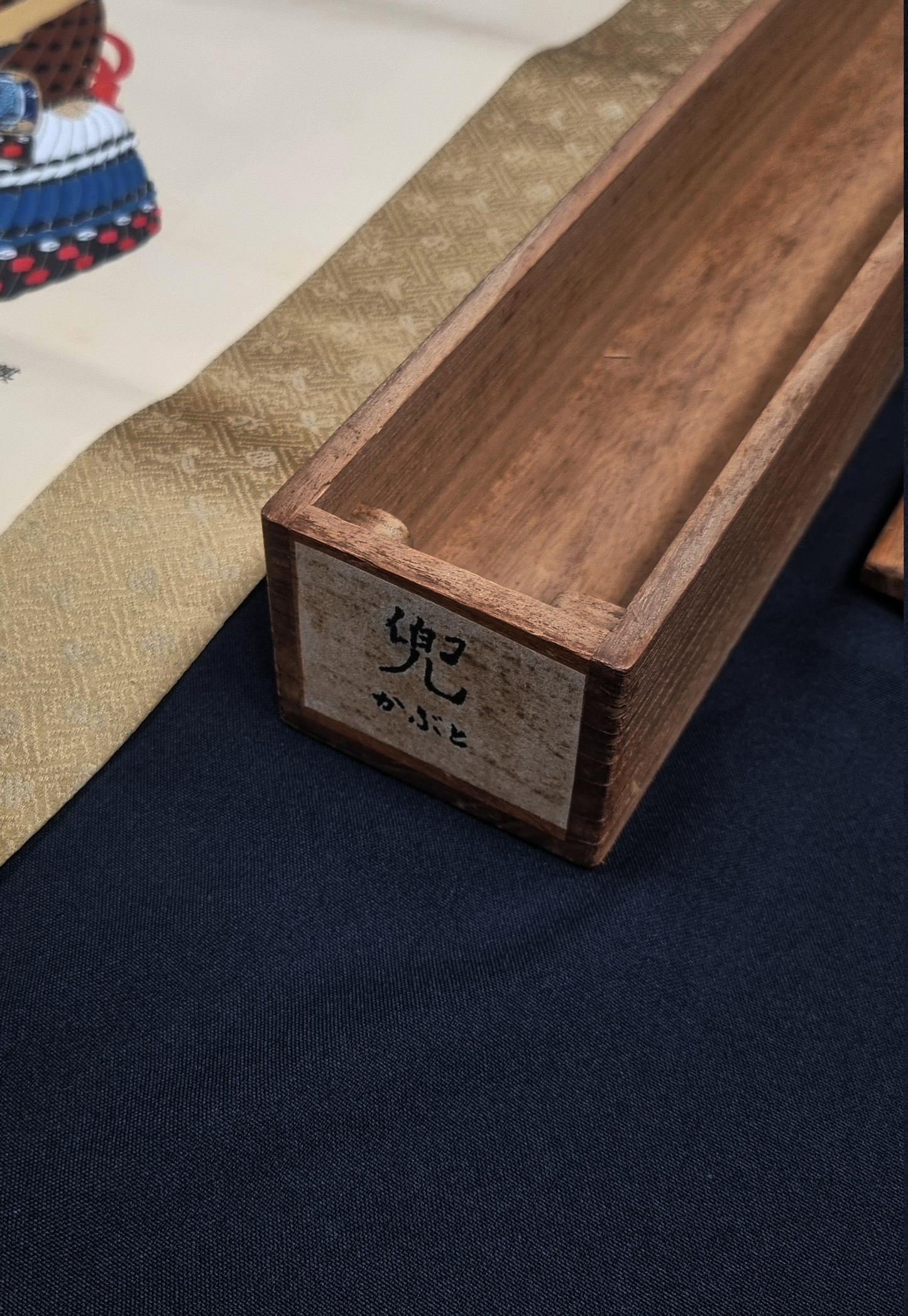Hontō
KAKEJIKU - Kabuto - by Zaitei
KAKEJIKU - Kabuto - by Zaitei
Couldn't load pickup availability
Share
Kakejiku (hanging scroll), or kakemono, is made of silk, Japanese paper, wood, and special glue. Caution! Kakejiku prefers an environment that is either too humid or too dry. Keep out of direct sunlight.
Description:
This item is a Kakejiku (掛軸, hanging scroll). When a hanging scroll is displayed in a Japanese-style room, it is generally hung on the wall of the Tokonoma (床の間). However, there is no etiquette that dictates that a hanging scroll cannot be hung anywhere other than in a Tokonoma or Japanese-style room. You can enjoy it wherever you display it.
This hanging scroll appears to have been the scroll hung during the season of Tango no Sekku (端午の節句). Tango-no Sekku (端午の節句) is one of the seasonal festivals and is generally considered to be the boys' festival. It is said that Tango-no Sekku originated on the continent. Since the Muromachi period (1336-1658), there was a custom of displaying certain objects, such as a hanging scroll depicting a samurai or samurai armor, in the hope that boys would grow up well and achieve success.
As for the design, it depicts a samurai armor, called a kabuto (兜, helmet). A kabuto is a protector for the head.
When people began using the kabuto, it was initially designed for practical purposes, such as wearing it to ward off sword attacks. However, the main purpose of the design changed over time; samurai sought to express their dignity, personality, or religion by wearing the characteristic kabuto. Judging by the beautiful decoration of this kabuto, it exudes masculinity and strength.
Umeto Zaitei
Umeto Zaitei (梅戸在貞, 1883-1964) was born in 1883 to Umeto Zaikin. His father, Zaikin, was a painter who also worked at the Kyoto Prefectural School of Painting, and he was the grandson of Hara Zaichū. Zaitei also graduated from the Faculty of Design, Kyoto University of Fine Arts in 1903, following in his father's footsteps. His painting style is gentle, based on traditional techniques that had existed since the time of Hara Zaichū, and shows no traces of eccentricity.
Zaitei began using the pseudonym depicted in this painting, "麒鳳庵," meaning "qilin, fenghuang," to commemorate his contribution to the creation of the imperial throne for Emperor Taishō's enthronement ceremony in 1915. His contribution consisted of painting images of qilins and fenghuangs on the throne.
Around 1946, raw materials were scarce due to the country's defeat in the war, and people's lives were devastated both materially and mentally. It goes without saying that Zaitei's artistic heart, which prompted him to paint something as gentle as this work during such difficult times, stemmed from the traditions of the multigenerational Hara school.
This Japanese hanging scroll features a striking illustration of a Kabuto (samurai helmet) by artist Umeto Zatei. Executed in hand-painted ink and pigments on silk, the artwork captures the refined craftsmanship and symbolic power of the samurai era. Mounted on wooden scrolls, the scroll comes in its original wooden box, preserving its authenticity and historical value. A perfect piece for collectors of Japanese samurai art and traditional military iconography.
Specifications:
Item: Hanging scroll
Artist: Umeto Zaitei (梅戸在貞, 1883-1964)
Signature: 麒鳳庵
Origin: Kyoto, Japan
Period: Shōwa period
Scroll size: L 153 x W 44 cm
Box size: L 61 x W 7.5 x H 7 cm
Comes with an insect repellent scented sachet from Kyoto.
Condition: The painting is in good condition. (See photos for details). Minor signs of age, some stains, tears, wrinkles, and spots.
